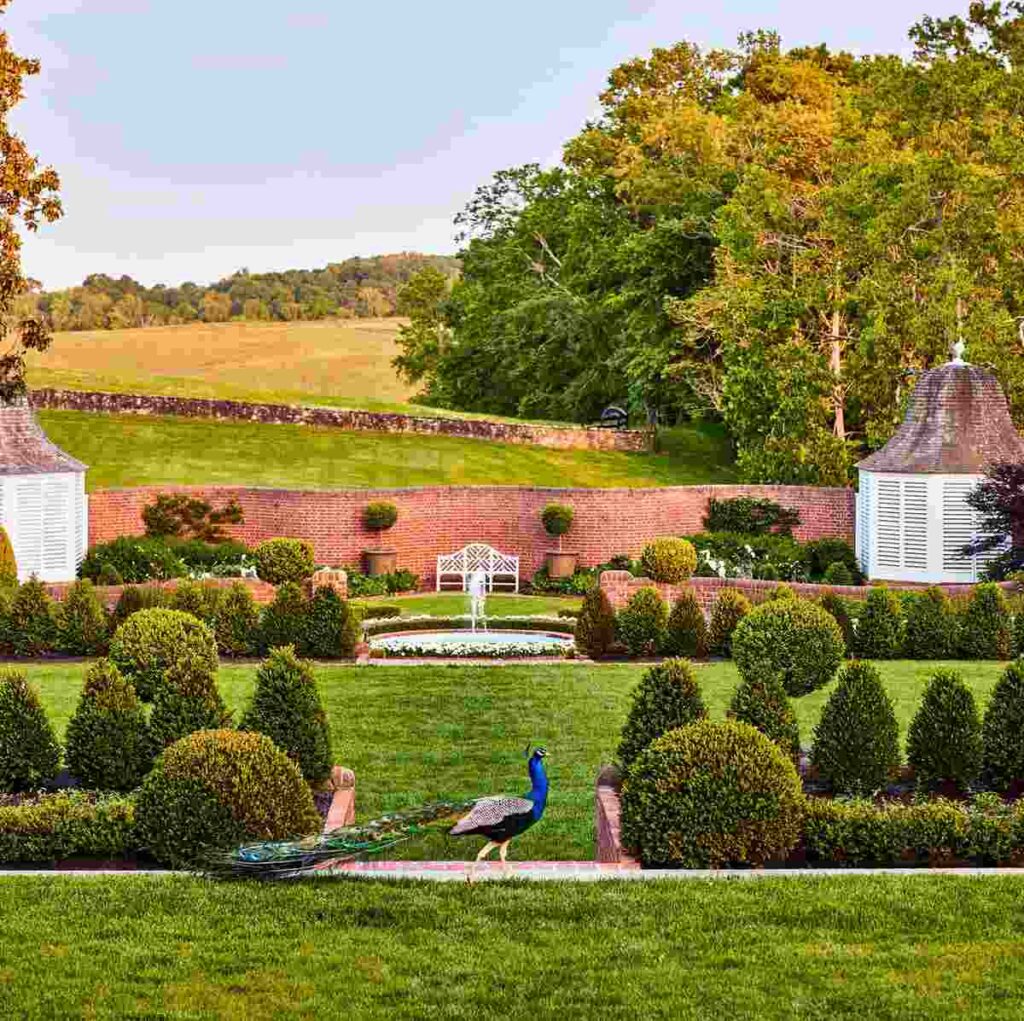Creating a beautiful and welcoming walkway starts with choosing the right plants. Whether you’re designing a path through a garden, leading up to a front door, or along a side yard, the plants you select can make a big difference in the overall look and feel. The best plants for landscaping along a walkway should be both attractive and functional, enhancing the path without overpowering it. In this blog post, Liberty Heritage Nursery Farm helps to explore factors like color, texture, height, and maintenance needs when selecting your greenery. From low-growing ground covers to striking flowering perennials, there’s a perfect plant for every walkway, ready to turn a simple path into a scenic journey.
Ground Covers
Ground covers are an excellent choice for walkways service as they create a lush, carpet-like effect and help suppress weeds. One popular option is Creeping Thyme, which is low-growing, aromatic, and able to handle light foot traffic. Its tiny, purple flowers add a pop of color while its fragrance enhances the sensory experience of walking. Another great ground cover is Sedum, available in various types offering different textures and colors, all of which are drought-tolerant and resilient. Ajuga, also known as Bugleweed, is another attractive ground cover with its vibrant foliage and small, blue flowers. It spreads quickly, making it perfect for filling in gaps and adding visual interest to the edges of a walkway.
Ornamental Grasses

Ornamental grasses bring texture, movement, and a natural feel to walkway landscaping. Blue Fescue is a compact grass with blue-green foliage that provides a striking contrast to other plants. It’s hardy and low-maintenance, making it ideal for edging walkways. Japanese Forest Grass offers a bright green or variegated appearance and has a graceful, arching form that softens the hard lines of a walkway. For those looking for vertical interest, Feather Reed Grass is a great choice. Its tall, slender form and feathery plumes add height and elegance, creating a dynamic landscape feature that sways gently with the wind.
Perennials
Perennials are a favorite for walkway landscaping due to their durability and recurring blooms. Lavender is a top pick, providing not only attractive purple flowers but also a pleasant fragrance. Its silvery foliage contrasts beautifully with green plants, and it thrives in sunny spots. Hostas are perfect for shaded walkways, offering large, textured leaves in various shades of green, blue, and variegated patterns. They create a lush, tropical feel and require minimal maintenance. Daylilies are another excellent choice, known for their hardiness and vibrant blooms in a range of colors. They have a long blooming period and can adapt to different soil types, making them versatile and easy to grow.
Shrubs
Shrubs add structure and formality to walkway landscapes. Boxwood is a classic choice for edging due to its dense, evergreen foliage that can be trimmed into neat shapes. It provides a formal, elegant look and serves as a great backdrop for flowering plants. Dwarf Japanese Maple is another stunning shrub, offering beautiful, finely-cut foliage in vibrant reds, oranges, and purples. It’s a striking focal point that adds color and texture to the landscape. For those who prefer lush blooms, Hydrangeas are ideal. They produce large, ball-shaped flowers in shades of blue, pink, or white, depending on the soil pH. Hydrangeas thrive in partial shade and add a touch of cottage garden charm to walkways.
Flowering Plants
Flowering plants are essential for adding color and seasonal interest to walkway landscapes. Petunias are a popular choice, known for their bright, colorful flowers that bloom profusely from spring to fall. They come in a wide range of colors and patterns, making them versatile for various design schemes. Geraniums are another favorite, offering vibrant blooms and a hardy nature. They thrive in sunny spots and can be used in both formal and informal garden settings. Impatiens are perfect for shaded walkways, providing a burst of color with their prolific blooms in red, pink, white, and purple. They create a cheerful, inviting atmosphere and are easy to maintain.
Herbs and Edibles
Incorporating herbs and edible plants into walkway landscaping adds both aesthetic and practical value. Rosemary is an aromatic herb with needle-like leaves and small blue flowers. It’s hardy and drought-tolerant, making it an excellent choice for sunny walkways. Rosemary can also be used in cooking, adding a functional element to the landscape. Chives offer grassy texture with the bonus of edible flowers and leaves. Their purple flowers attract pollinators, adding ecological benefits to the garden. Strawberry Plants are a delightful addition, serving as ground cover with the bonus of producing sweet, edible fruit. They create a charming, cottage-like feel and are particularly appealing to children.
Vines and Climbers
Vines and climbers can add vertical interest and soften the edges of walkways. Clematis is a popular choice for its stunning, large flowers that come in a variety of colors. It can be trained to climb over arbors, trellises, or along fences, creating a beautiful, cascading effect. Ivy, particularly English Ivy, is another excellent option, known for its evergreen foliage that provides year-round greenery. It can climb walls or spill over the sides of pathways, adding a lush, verdant look. For a more colorful option, Trumpet Vine produces vibrant, trumpet-shaped flowers that attract hummingbirds and butterflies, adding both visual and ecological benefits to the garden.
Succulents
Succulents are ideal for low-maintenance landscaping, particularly in dry or sunny areas. Echeveria, with its rosette-forming habit, offers a range of colors from blue-green to pinkish hues. It’s perfect for adding a unique texture and color contrast to the landscape. Sempervivum, commonly known as Hens and Chicks, is another popular succulent that is hardy and easy to care for. It spreads by producing offsets, creating clusters of rosettes that can fill gaps and add interest along walkways. Sedum varieties, especially the low-growing types, are excellent for edging and ground cover, offering small, star-shaped flowers and fleshy leaves that are both drought-resistant and visually appealing.
Native Plants

Incorporating native plants into walkway landscaping is a sustainable choice that supports local ecosystems. Coneflower (Echinacea) is a striking native perennial known for its daisy-like flowers with prominent central cones. It attracts pollinators and thrives in a variety of soil conditions. Black-Eyed Susan (Rudbeckia) is another excellent native option, with bright yellow flowers and a long blooming period. It’s drought-tolerant and easy to grow, making it perfect for low-maintenance landscapes. Little Bluestem, a native ornamental grass, provides year-round interest with its blue-green foliage that turns a striking red in the fall. It’s drought-resistant and supports local wildlife, making it an environmentally friendly choice.
Bulbs
Bulbs are a great way to add seasonal color to walkway landscaping, especially in spring. Tulips are a classic choice, offering a wide range of colors and shapes. They provide a burst of color after winter and are excellent for planting in clusters along walkways. Daffodils are another spring favorite, known for their cheerful yellow blooms and ability to naturalize, spreading and returning year after year. Alliums, with their large, spherical blooms on tall stems, add a unique architectural element to the landscape. They come in various shades of purple, blue, and white, and their long-lasting flowers are perfect for adding interest to late spring and early summer gardens.
Ferns
Ferns are ideal for shaded walkways, offering lush, green foliage and a soft, feathery texture. Boston Fern is a popular choice, known for its arching fronds and ability to thrive in humid, shaded conditions. It’s perfect for adding a tropical feel to the garden. Maidenhair Fern is another elegant option, with delicate, lacy fronds that add a fine texture to the landscape. It prefers cool, shaded areas and moist soil, making it ideal for woodland garden settings. Japanese Painted Fern offers a unique color palette with its silvery fronds accented by purple and green, providing a striking contrast to other shade-loving plants.
Annuals
Annuals are perfect for adding vibrant, seasonal color to walkways. Marigolds are a popular choice, offering bright yellow, orange, and red flowers that bloom profusely. They are easy to grow and can be used as borders or fillers. Begonias are versatile annuals that thrive in both sun and shade, with beautiful flowers and attractive foliage. They are ideal for adding continuous color throughout the growing season. Zinnias are another excellent choice, known for their bold colors and long-lasting blooms. They are drought-tolerant and attract pollinators, making them both beautiful and beneficial for the garden.
Topiary and Shaped Plants
For a more formal and structured look, topiary and shaped plants can be used along walkways. Boxwood is a classic choice for creating formal hedges and topiary shapes. It can be trimmed into various forms, from simple spheres to more intricate designs, adding a touch of elegance to the landscape. Privet is another excellent choice for topiary, known for its dense foliage and rapid growth. It can be shaped into hedges, cones, or spirals, providing a sculptural element to the garden. Bay Laurel is not only decorative but also aromatic, with the added benefit of being an herb that can be used in cooking. It can be pruned into various shapes and makes a stunning focal point.
Conclusion
Incorporating the right plants along your walkway can transform it into a stunning feature of your landscape. Whether you choose vibrant flowers, lush greenery, or a mix of both, these plants will not only enhance the visual appeal but also create a welcoming atmosphere for guests. Remember to consider the climate, sunlight, and maintenance requirements when selecting your plants to ensure they thrive in their new home. With careful planning and a little creativity, you can create a beautiful, inviting walkway that complements your home and garden.
